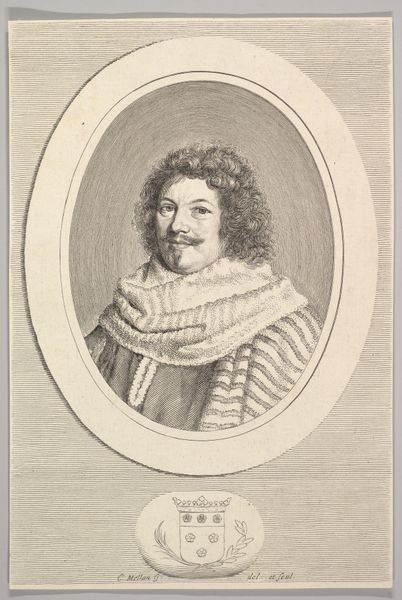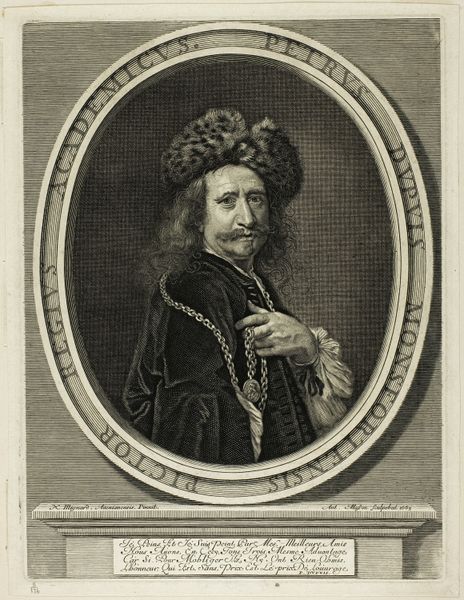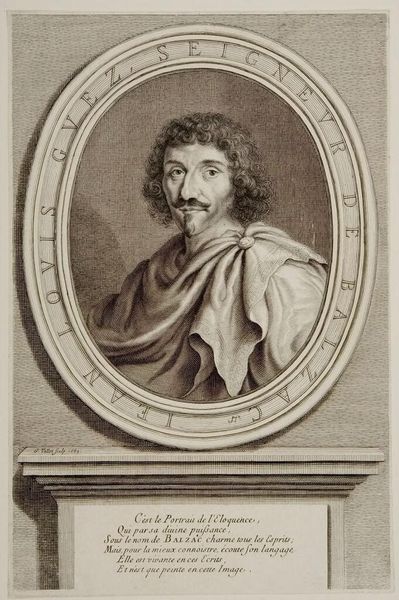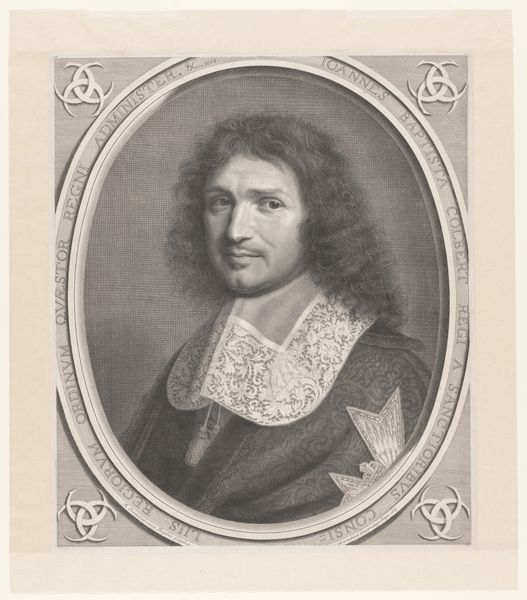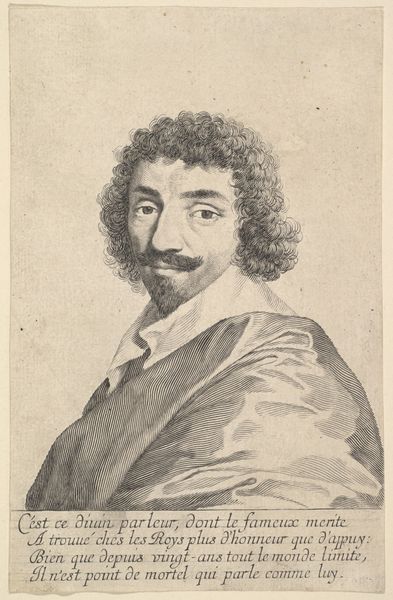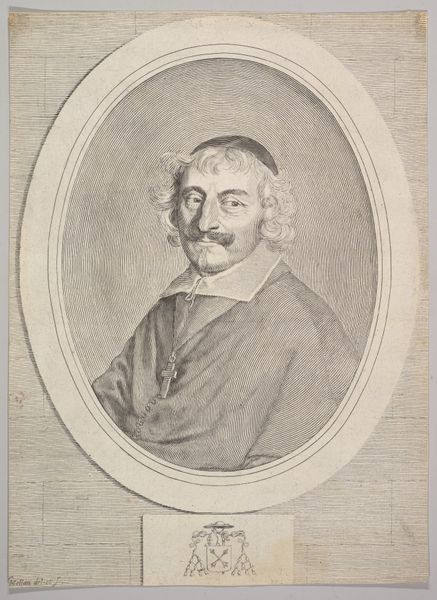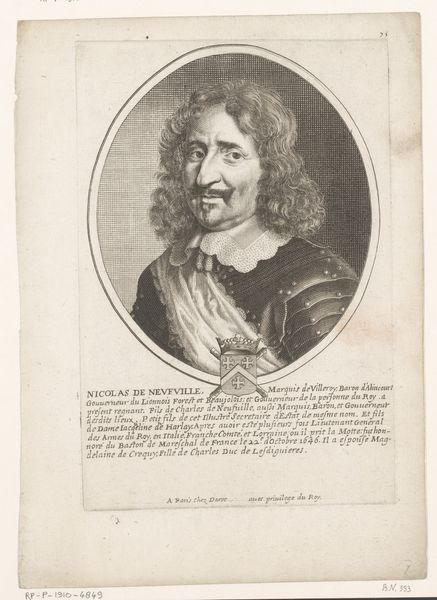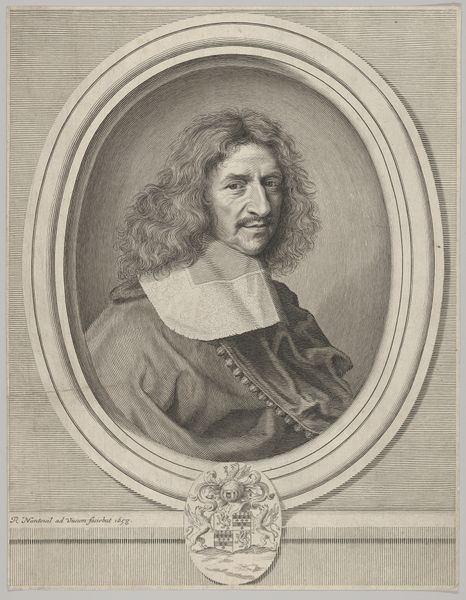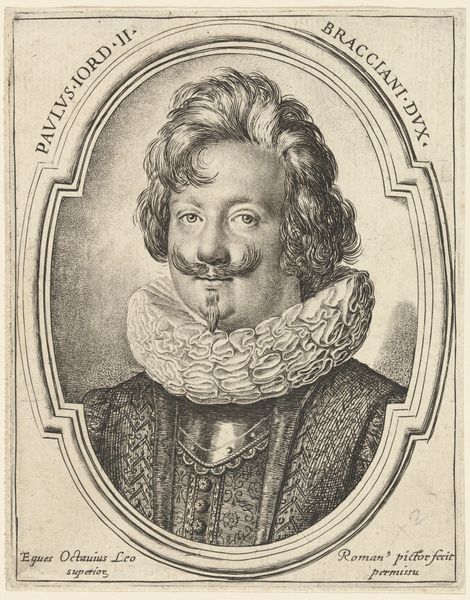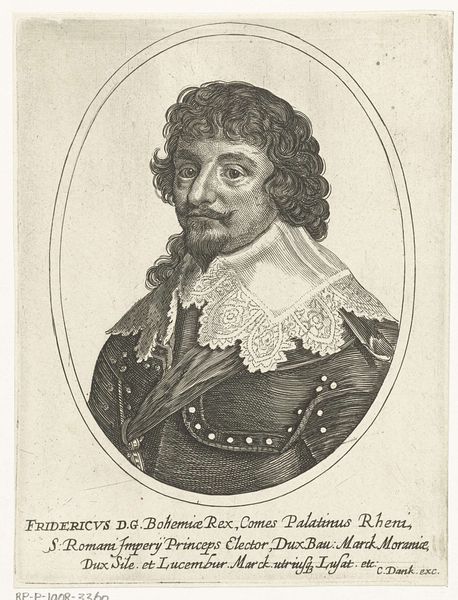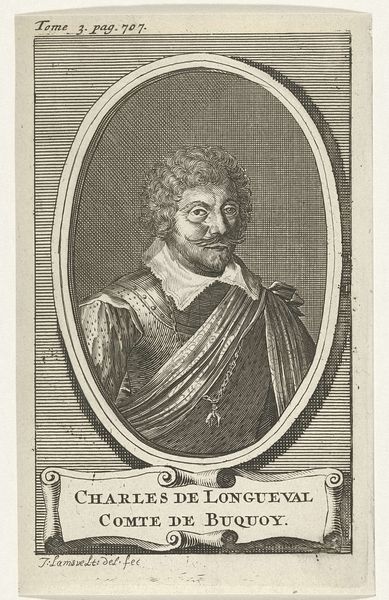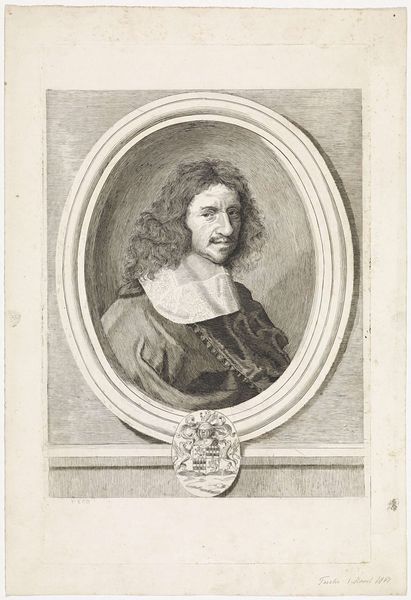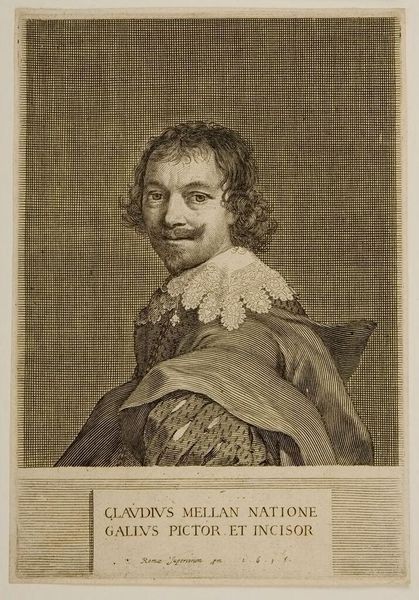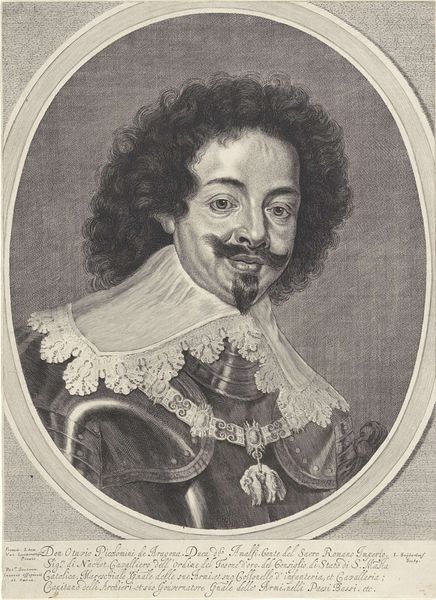
drawing, print, engraving
#
portrait
#
drawing
#
baroque
# print
#
engraving
Dimensions: height 184 mm, width 161 mm
Copyright: Rijks Museum: Open Domain
Curator: Welcome! Here at the Rijksmuseum, we're looking at an engraving from sometime between 1688 and 1698 titled "Portret van schilder Simon de Vos," which translates to Portrait of the Painter Simon de Vos. Editor: My first thought is about the remarkable texture achieved through printmaking. The rendering of the hair and ruff are exceptionally well done; they invite the eye to explore the materiality of the engraving itself. Curator: Indeed, and situating De Vos within his own time—the Baroque period—sheds light on this portrayal of the artist as a public intellectual and somebody of high society. Think about the intersection of artistry and social class that's on display. Editor: I’m more interested in the social framework in which prints and engravings circulated and their importance in visual culture. The act of reproducing the portrait speaks volumes about status, labor and the creation of visual capital. The availability of an engraved image of a painter suggests something important. Curator: Right, we're witnessing the democratization of images! This work represents broader cultural and socio-political shifts. It’s fascinating how notions of gender, labor, and class are constructed, as the very materiality carries complex ideological messaging. Editor: Agreed! One of the defining features of Baroque-era work is ornamentation, often expressed through grand, sweeping gestures. By making and consuming objects of ornamentation, it created social mobility, which is a significant consideration here. Curator: Considering Simon de Vos's place as a painter during a crucial moment in the history of art, it offers a powerful way for us to look at themes of power, agency, and visibility of people in creative spaces during that time period. Editor: Absolutely. Examining this work through the lens of the means of artistic production allows us to have rich interdisciplinary engagement about social class, artistic creation and access during this transformative period in European history. Curator: Well said! It provides insightful commentary not only on its subject but also on the intricate social and historical environment that surrounded the making of images like these. Editor: Exactly. The enduring allure lies in its remarkable technical skill. We cannot discuss De Vos, nor ignore our era of cultural reproduction and its implications.
Comments
No comments
Be the first to comment and join the conversation on the ultimate creative platform.
